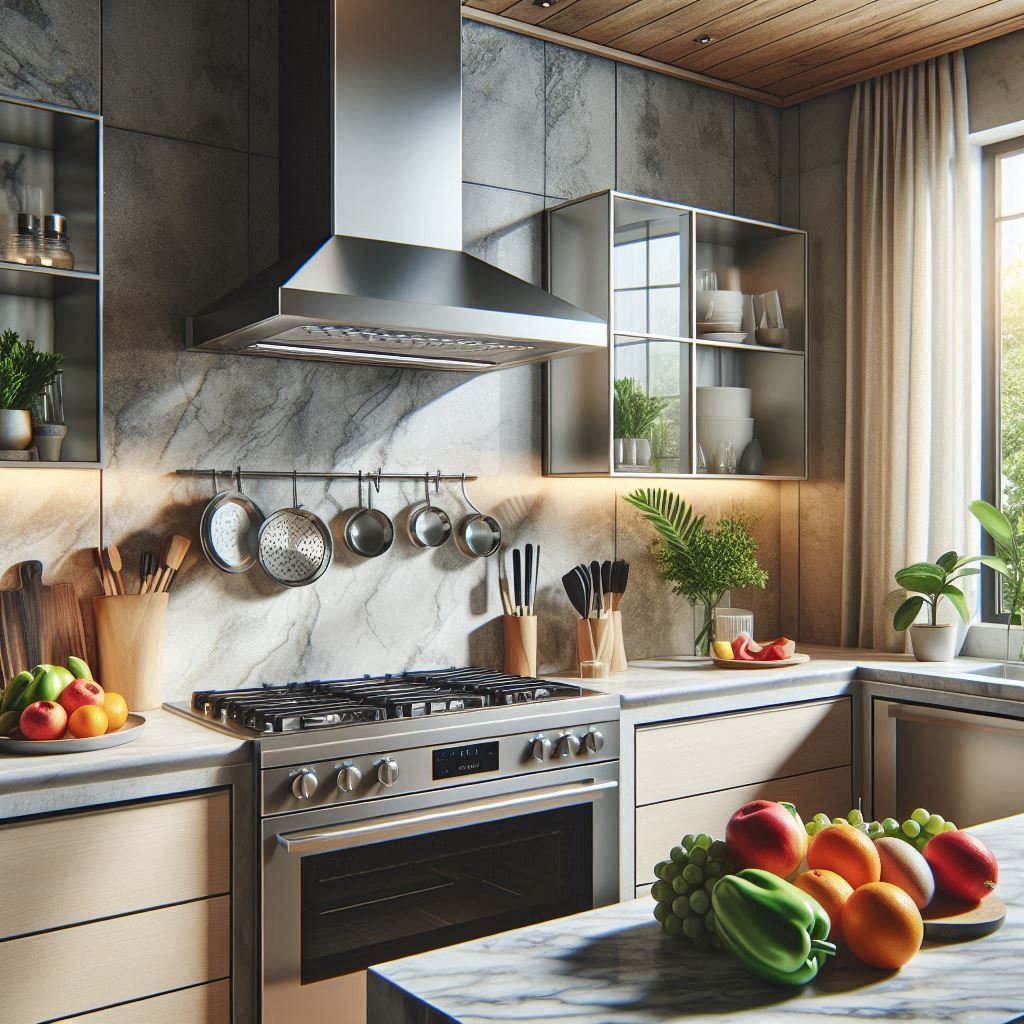A well-functioning kitchen is a cornerstone of any home, and one of the essential components to ensure it operates smoothly is a high-quality range hood. Not only does a range hood help eliminate smoke, steam, and odors from cooking, but it also enhances the overall aesthetic of your kitchen. With so many options available, choosing the right range hood can be overwhelming. This guide will walk you through the key factors to consider, different types of range hoods, and tips for finding the perfect fit for your kitchen.
Why a Range Hood is Essential
Before diving into the specifics, it’s important to understand why a range hood is crucial. Cooking produces not just odors but also grease, moisture, and harmful particles that can linger in the air. A range hood helps to:
- Improve Air Quality: By filtering out pollutants and moisture, a range hood contributes to a healthier cooking environment.
- Reduce Grease Buildup: A good range hood minimizes grease accumulation on kitchen surfaces, making cleaning easier.
- Enhance Kitchen Aesthetics: Range hoods come in various designs and finishes, adding style to your kitchen space.
- Increase Property Value: A high-quality range hood can be an attractive feature for potential buyers.
Key Factors to Consider
- Type of Range Hood
- Wall-Mounted: These are fixed to the wall above your cooktop and are ideal for kitchens with an island or against a wall. They come in various styles, including chimney and canopy.
- Under-Cabinet: These are installed beneath the cabinetry and are great for kitchens with limited space. They blend seamlessly with existing cabinetry.
- Island: For kitchens with a cooktop on an island, an island range hood provides effective ventilation and can be a focal point of your kitchen design.
- Downdraft: These hoods are installed within the countertop and rise up when needed, making them perfect for minimalist kitchens.
- Size
- The range hood should ideally be at least as wide as your cooking surface, but a larger hood can provide better coverage. Common widths are 30, 36, or 42 inches. For effective performance, consider extending the width by a few inches on either side of the cooktop.
- Ventilation Type
- Ducted (Ventilation): This type expels air outside your home, offering the most effective odor and moisture removal. However, installation can be more complex and may require additional ductwork.
- Ductless (Recirculating): These hoods filter the air and recirculate it back into the kitchen. They are easier to install but may not be as effective as ducted options.
- Airflow (CFM)
- The airflow of a range hood is measured in cubic feet per minute (CFM). For effective ventilation, a range hood should have a CFM rating that corresponds to your cooktop’s BTU (British Thermal Unit) output. A good rule of thumb is 100 CFM for every 10,000 BTUs.
- Noise Level
- The noise level of a range hood is measured in sones. A lower sone rating means a quieter operation. If you prefer a quieter kitchen environment, look for models that operate at 2-3 sones.
- Style and Finish
- Choose a range hood that complements your kitchen’s decor. Options range from stainless steel to custom wood finishes. Consider the overall theme of your kitchen, whether it’s modern, traditional, or industrial.
- Controls and Features
- Modern range hoods come with various features such as variable speed settings, LED lighting, and easy-to-clean filters. Look for intuitive controls and features that enhance usability.
Types of Filters
- Mesh Filters: These are typically made from aluminum and are effective at capturing grease. They are washable and reusable, making them cost-effective.
- Baffle Filters: These are designed for professional kitchens and are made of stainless steel. They are more efficient at trapping grease and are easy to clean.
- Charcoal Filters: Used in ductless range hoods, charcoal filters absorb odors but need to be replaced regularly.
Installation Considerations
When planning your range hood installation, consider the following:
- Height: The ideal height for installation above your cooktop is typically between 24 and 30 inches. However, check the manufacturer’s recommendations for specific models.
- Ductwork: If opting for a ducted range hood, ensure your home can accommodate the necessary ductwork for effective venting.
- Electrical Requirements: Verify that your kitchen has the appropriate electrical setup for your chosen range hood, especially for models with advanced features.
Maintenance Tips
To keep your range hood functioning optimally:
- Clean Filters Regularly: Depending on usage, clean or replace filters every few months to prevent grease buildup.
- Wipe Down Exterior: Regularly clean the exterior of the hood to maintain its appearance and prevent grease stains.
- Check for Obstructions: Ensure that ductwork is free of blockages to maintain airflow efficiency.
Conclusion
Choosing the right range hood for your kitchen is an investment in both functionality and aesthetics. By considering the type, size, ventilation, airflow, noise level, and style, you can find a range hood that perfectly fits your cooking needs and enhances your kitchen’s design. A well-chosen range hood will improve air quality, reduce grease buildup, and make your kitchen a more enjoyable place to cook and gather. Happy cooking!
